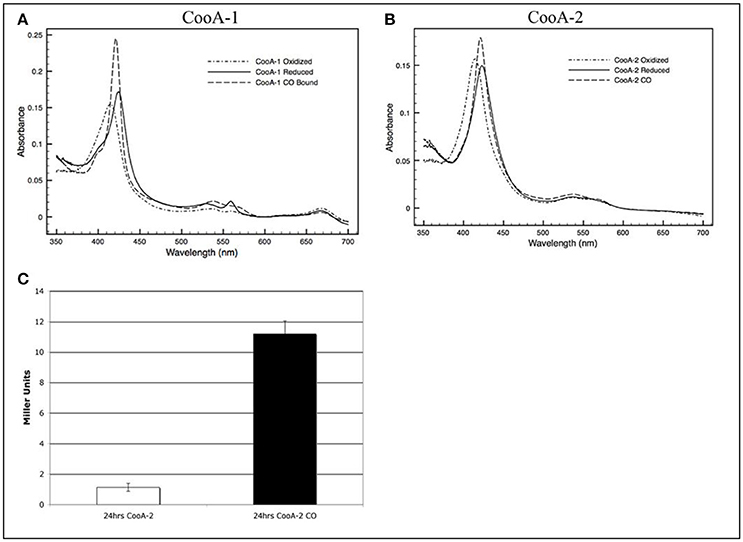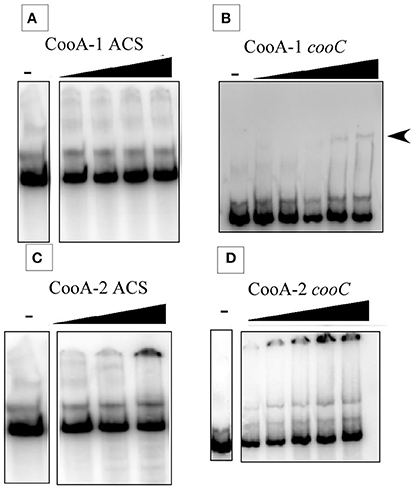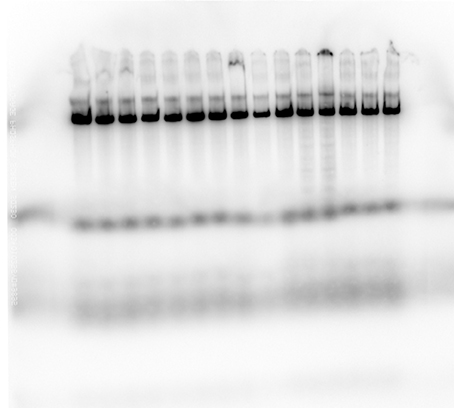
94% of researchers rate our articles as excellent or good
Learn more about the work of our research integrity team to safeguard the quality of each article we publish.
Find out more
CORRECTION article
Front. Microbiol., 05 July 2018
Sec. Evolutionary and Genomic Microbiology
Volume 9 - 2018 | https://doi.org/10.3389/fmicb.2018.01016
This article is a correction to:
Regulation of Multiple Carbon Monoxide Consumption Pathways in Anaerobic Bacteria
 Stephen M. Techtmann1
Stephen M. Techtmann1 Albert S. Colman2
Albert S. Colman2 Michael B. Murphy3
Michael B. Murphy3 Wendy S. Schackwitz4
Wendy S. Schackwitz4 Lynne A. Goodwin5
Lynne A. Goodwin5 Frank T. Robb1*
Frank T. Robb1*A corrigendum on
Regulation of multiple carbon monoxide consumption pathways in anaerobic bacteria
by Techtmann, S. M., Colman, A. S., Murphy, M. B., Schackwitz, W. S., Goodwin, L. A., and Robb, F. T. (2011). Front. Microbio. 2:147. doi: 10.3389/fmicb.2011.00147
In the original article, there was a mistake in Figure 2 as published. Specifically, panel 2D was included in error thus, the authors wish to remove it. Consequently, the caption for Figure 2 has been updated due to the removal of 2D, and the in-text citation has been removed from the following sentence: “E. coli overexpressing wild type CooA-2 acquired a red color similar to the color of CooA-1 expressing E. coli as described in Youn et al. (2004) due to the accumulation of the heme containing protein (Figure 2D)” in Results section, subsection “Expression and Characterization of CooA-2”. The corrected Figure 2 appears below.

Figure 2. Visible spectra of a 2.2 μM (A) CooA-1 and (B) CooA-2. Dotted lines indicate the spectrum of oxidized CooA. Solid line indicates reduced CooA. Dashed line indicates reduced CooA under 1 atm of CO. (C) β-galactosidase activity of CooA-2 expressing E. coli DH5α with a lacZ under the control of the R. rubrum cooF promoter. Experiments with CO were grown with 2% CO in the headspace of the culture.
Additionally, there was a mistake in Figure 4. In the figure, the gel images had been edited. The no-protein control lane was moved to be adjacent to the relevant experimental lanes by removing empty lanes or ones with other controls. The authors neglected to mention this adjustment in the submission of the paper and wish to replace Figure 4 with an updated version where the spliced lanes have been clearly separated from the contiguous gel regions with black lines and white space to indicate where the control lanes are. The corrected Figure 4, as well as the original gel image used to prepare Figure 4, appear below.

Figure 4. Electrophoretic mobility shift assays at 25°C. Gel shift results showing the binding of CooA-1 or CooA-2 to either pacs or the pcooChyd promters from C. hydrogenoformans. Arrows indicate formation of the CooA-promoter complex. (A) CooA-1 binding to pacs (Protein added: 3, 6, 12, 18 μg/ml). (B) CooA-1 binding to pcooChyd (Protein added: 3, 6, 9, 12, 15 μg/ml). (C) CooA-2 binding to pacs (Protein added: 3, 6, 9 μg/ml). (D) CooA-2 binding to pcooChyd (Protein added: 3, 6, 9, 12, 15 μg/ml).

The original gel image used to prepare Figure 4.
The authors apologize for these oversights and state that these errors do not change the scientific conclusions of the article in any way.
The original article has been updated.
The authors declare that the research was conducted in the absence of any commercial or financial relationships that could be construed as a potential conflict of interest.
Keywords: carbon monoxide, thermophiles, hydrogenogens, carboxydotrophs, Carboxydothermus hydrogenoformans, carbon monoxide dehydrogenase, CooA
Citation: Techtmann SM, Colman AS, Murphy MB, Schackwitz WS, Goodwin LA and Robb FT (2018) Corrigendum: Regulation of multiple carbon monoxide consumption pathways in anaerobic bacteria. Front. Microbiol. 9:1016. doi: 10.3389/fmicb.2018.01016
Received: 17 April 2018; Accepted: 30 April 2018;
Published: 05 July 2018.
Edited and reviewed by: Ludmila Chistoserdova, University of Washington, United States
Copyright © 2018 Techtmann, Colman, Murphy, Schackwitz, Goodwin and Robb. This is an open-access article distributed under the terms of the Creative Commons Attribution License (CC BY). The use, distribution or reproduction in other forums is permitted, provided the original author(s) and the copyright owner(s) are credited and that the original publication in this journal is cited, in accordance with accepted academic practice. No use, distribution or reproduction is permitted which does not comply with these terms.
*Correspondence: Frank T. Robb, ZnJvYmJAc29tLnVtYXJ5bGFuZC5lZHU=
Disclaimer: All claims expressed in this article are solely those of the authors and do not necessarily represent those of their affiliated organizations, or those of the publisher, the editors and the reviewers. Any product that may be evaluated in this article or claim that may be made by its manufacturer is not guaranteed or endorsed by the publisher.
Research integrity at Frontiers

Learn more about the work of our research integrity team to safeguard the quality of each article we publish.